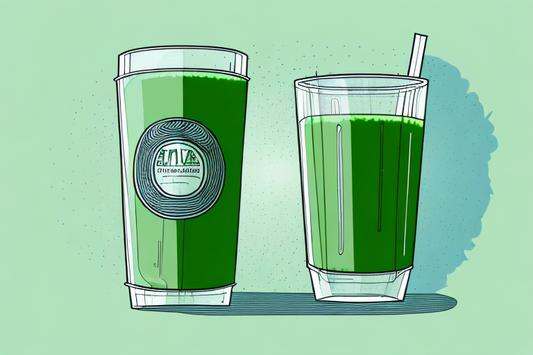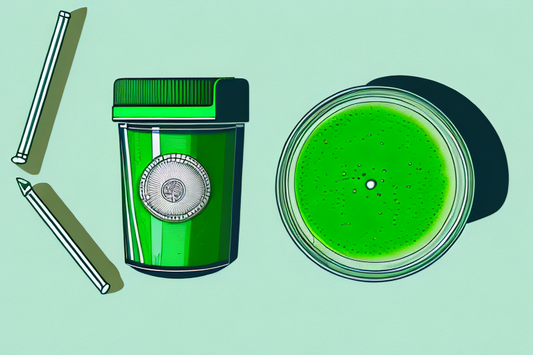How to Use Green Juices with Alpha Lipoic Acid to Treat Neuropathy
Neuropathy is a condition that affects millions of people around the world. It is a medical condition that causes damage to the peripheral nerves, leading to numbness, pain, and tingling sensations in the affected areas. The condition can affect various parts of the body, such as the hands, arms, feet, or legs. There are several types of neuropathy, but the most common one is diabetic neuropathy, which is a complication of type 1 or type 2 diabetes.
Dealing with neuropathy can be a frustrating and challenging experience, but there are natural remedies that could help manage the symptoms and improve the quality of life for individuals with neuropathy. In this article, we will explore how green juices with Alpha Lipoic Acid (ALA) can be used to treat neuropathy. We will start with an overview of neuropathy and its causes, then discuss the role of Alpha Lipoic Acid in neuropathy treatment, the nutritional benefits of green juices, and the power of combining green juices and Alpha Lipoic Acid for neuropathy treatment.
Understanding Neuropathy and Its Causes
What is Neuropathy?
Neuropathy is a medical term used to describe the damage or dysfunction of one or more nerves in the body's peripheral nervous system. The peripheral nervous system is a vast network of nerves that connect the brain and the spinal cord to the rest of the body. When the peripheral nervous system is damaged or dysfunctional, it can cause a range of symptoms, including numbness, tingling, weakness, and pain, depending on the nerve that is affected and the severity of the damage.
The peripheral nervous system comprises two types of nerves:
- Sensory nerves: These nerves help in transmitting sensations from the skin, such as touch, temperature, and pain, to the brain.
- Motor nerves: These nerves carry signals from the brain to the muscles, enabling voluntary movements.
Damage or dysfunction of these nerves can affect the quality of life of an individual, making it difficult to perform everyday activities.
Common Causes of Neuropathy
Neuropathy can result from several factors, including:
- Diabetes: Neuropathy is a common complication of both type 1 and type 2 diabetes. High blood sugar levels can damage the nerves over time, leading to neuropathy.
- Injuries: Injuries or trauma to the nerves can cause damage and lead to neuropathy. This can include car accidents, falls, and sports injuries.
- Alcoholism: Excessive alcohol intake can damage the nerves. Chronic alcohol abuse can lead to alcoholic neuropathy, which affects the nerves in the feet and hands.
- Infections: Certain infections, such as HIV, Lyme disease, and shingles, can damage the nerves. These infections can cause inflammation, which can damage the nerves.
- Toxic substances: Exposure to toxins such as heavy metals, chemicals, and drugs can cause nerve damage. This can include chemotherapy drugs used to treat cancer.
It is important to identify the underlying cause of neuropathy to determine the appropriate treatment plan.
Symptoms and Diagnosis
The symptoms of neuropathy typically depend on the nerves that are affected. The most common symptoms include:
- Numbness or tingling sensations in the affected areas.
- Burning or stabbing pain.
- Muscle weakness or loss of coordination.
- Sensitivity to touch.
- Loss of reflexes.
If you experience any of these symptoms, it is important to seek medical attention. To diagnose neuropathy, your doctor may conduct various tests, such as a neurological examination, blood tests, or nerve conduction studies. These tests can help identify the underlying cause of neuropathy and determine the appropriate treatment plan.
Once diagnosed, your doctor may recommend various treatment options, including medication, physical therapy, and lifestyle modifications. It is important to follow your doctor's treatment plan and make any necessary lifestyle changes to manage the symptoms of neuropathy.
In summary, neuropathy is a medical condition that can affect the quality of life of an individual. It is important to identify the underlying cause of neuropathy and follow the appropriate treatment plan to manage the symptoms and improve quality of life.
The Role of Alpha Lipoic Acid in Neuropathy Treatment
What is Alpha Lipoic Acid?
Alpha Lipoic Acid (ALA) is a powerful antioxidant that can help reduce inflammation, protect against oxidative stress, and prevent nerve damage.
ALA is found naturally in several foods, such as broccoli, spinach, liver, and kidney. However, to get therapeutic benefits, higher dosages of ALA supplementation may be necessary, typically ranging from 600-1,800 mg per day.
Benefits of Alpha Lipoic Acid for Neuropathy
Several studies have explored the effectiveness of ALA on neuropathy treatment. One study published in the Journal of Diabetes and its Complications found that ALA supplementation improved several neuropathy symptoms, including burning pain, numbness, and muscle cramps.
Another study published in the Journal of Neurology found that ALA supplementation was an effective treatment option for reducing pain and improving mobility in patients with diabetic neuropathy.
Recommended Dosage and Precautions
The recommended dosage of ALA for neuropathy treatment typically ranges from 600-1,800 mg per day. However, it is essential to consult with your doctor before taking supplements, especially if you have any underlying medical conditions or are taking other medications.
In addition, some individuals may experience side effects, such as gastrointestinal upset, skin rash, and dizziness, when taking high doses of ALA. Therefore, it is crucial to monitor for potential side effects and discontinue use if symptoms persist or worsen.
The Power of Green Juices for Overall Health
Nutritional Benefits of Green Juices
Green juices are a fantastic way to get a concentrated dose of essential vitamins, minerals, and antioxidants. They are typically made by blending a combination of leafy greens, fruits, and vegetables, and can provide several health benefits, including:
- Promoting healthy digestion and gut health.
- Reducing inflammation and oxidative stress.
- Boosting the immune system.
- Improving energy levels and mental clarity.
Best Ingredients for Green Juices
When making green juices, it is essential to choose the right ingredients to maximize their therapeutic benefits. Some of the best ingredients for green juices include:
- Leafy greens: Kale, spinach, Swiss chard, and collard greens are excellent sources of essential vitamins and minerals such as vitamin K, folate, and iron.
- Fruits: Berries, lemons, and apples are fantastic sources of antioxidants and vitamin C.
- Ginger: Ginger is an anti-inflammatory root that can help reduce inflammation and improve digestion.
- Turmeric: Turmeric is another potent anti-inflammatory food that can help alleviate pain and reduce inflammation.
How Green Juices Can Support Neuropathy Treatment
Green juices can be a fantastic addition to neuropathy treatment because they can provide a concentrated dose of vitamins, minerals, and antioxidants that can help reduce inflammation and promote nerve health. In addition, green juices can help improve digestion, which is essential for individuals with neuropathy who may experience gastrointestinal symptoms.
Combining Green Juices and Alpha Lipoic Acid for Neuropathy Treatment
Creating a Balanced Green Juice Recipe
When creating a green juice recipe for neuropathy treatment, it is essential to choose the right ingredients that can provide a concentrated dose of beneficial vitamins and minerals. One easy and delicious recipe that you can try is:
- 1 cup chopped kale or spinach
- 1/2 cup blueberries or strawberries
- 1/2 lemon (juice only)
- 1 tablespoon grated ginger
- 1 teaspoon ground turmeric
- 1-2 tablespoons of honey (optional)
- 1/2-1 cup of water
Blend all the ingredients in a blender until smooth, and enjoy!
Incorporating Alpha Lipoic Acid into Your Green Juice
To incorporate ALA into your green juice, you can simply add a 600-1,800 mg ALA supplement to your juice recipe. Alternatively, you can add foods that are naturally rich in ALA, such as broccoli and spinach.
Tips for Consistent Consumption and Maximum Benefits
To get maximum benefits from green juices and ALA supplementation, it is essential to be consistent in your consumption habits. A few tips to help you stay consistent include:
- Prepare your juice in advance and store it in the refrigerator for up to 3 days.
- Set a daily reminder on your phone or calendar to drink your juice.
- Partner up with a friend or family member to hold each other accountable for consistent consumption.
Conclusion
Green juices and Alpha Lipoic Acid can be a powerful combination for managing neuropathy symptoms naturally. Green juices can provide a concentrated dose of essential vitamins and minerals, while ALA supplementation can help reduce inflammation and prevent nerve damage. By combining these two remedies, individuals with neuropathy can improve their quality of life and manage their symptoms more effectively.





